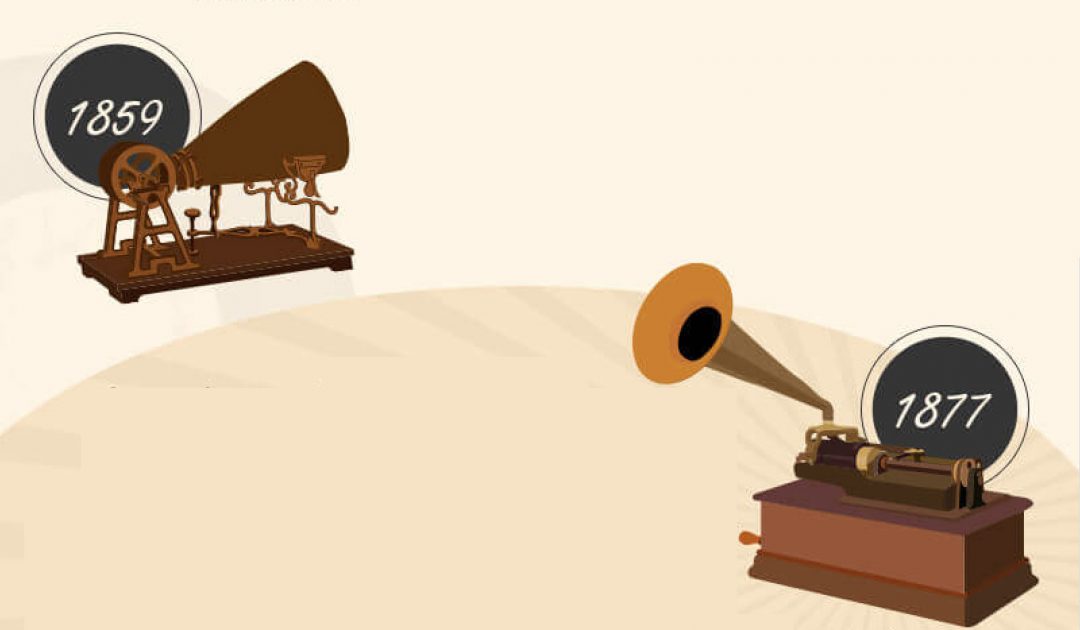Ever wondered how sound technology developed to the advanced heights of today’s digital music production? It’s strange to think about, but less than 200 years ago no sound had been recorded…Ever. The music industry didn’t really exist as the technology hadn’t been invented to produce recordings of music. If you wanted to enjoy music, the only way was to listen to it live.
Nowadays, we can record and manipulate music and sound to our heart’s content. What’s more, digital storage is more efficient than ever – just 20 years ago, people would have huge CD collections if they wanted to own their favourite tracks. In 2018, we can store thousands of songs on our phones, and stream tracks we like on the go whilst CDs have practically gone extinct.
This rapid transition from CDs to digital storage is just one part of the story – but it’s a great example of how quickly sound technology progresses. Before that, we had gramophones, electrical recording equipment and magnetic tapes, all of which had their day in the spotlight before quickly being replaced by a newer, shinier, and more efficient technology.
So how did it all begin? The very first sound ‘recording’ device was Édouard-Léon Scott de Martinville phonautograph in 1859, which was intended as a lab instrument designed to study soundwaves. It could only provide a two dimensional graph of sound waves, but not play them back.
Nearly twenty years later, in 1877, Thomas Edison overcame this hurdle with his invention of the phonograph – the first instrument that could both record sound and play it back through hollow wax cylinders. Strangely, the potential for recording and selling music was not his first thought – he believed that business communications would be a better target market for his new technology and it was only later it was realized entertainment use was far more profitable.
Unsurprisingly for an emerging technology, the phonograph had its limits – to create 500 cylinder copies, musicians would have to perform 25 times in front of 20 phonographs. Pretty hard for a track to go platinum under those conditions!
On top of this, the cylinders proved to be both fragile and difficult to store. The need for a better format was clear, and just 10 years later Emile Berliner introduced the gramophone to the market. With it came a far more recognizable and iconic format – the very first music discs. These discs – whether as vinyl records or later CDs – would come to dominate the market for over 100 years. Even now they haven’t totally disappeared – vinyl records have outlived their CD successors, remaining a popular collector’s item even in today’s digital age.
From there, technology continued to progress in leaps and bounds, with revolutionary technology emerging and taking over the market every few decades. For the full history of audio recording, check out the infographic designed by McGowan Transcriptions below – it’ll tell you all about all the key developments that led to the technology we enjoy today.
